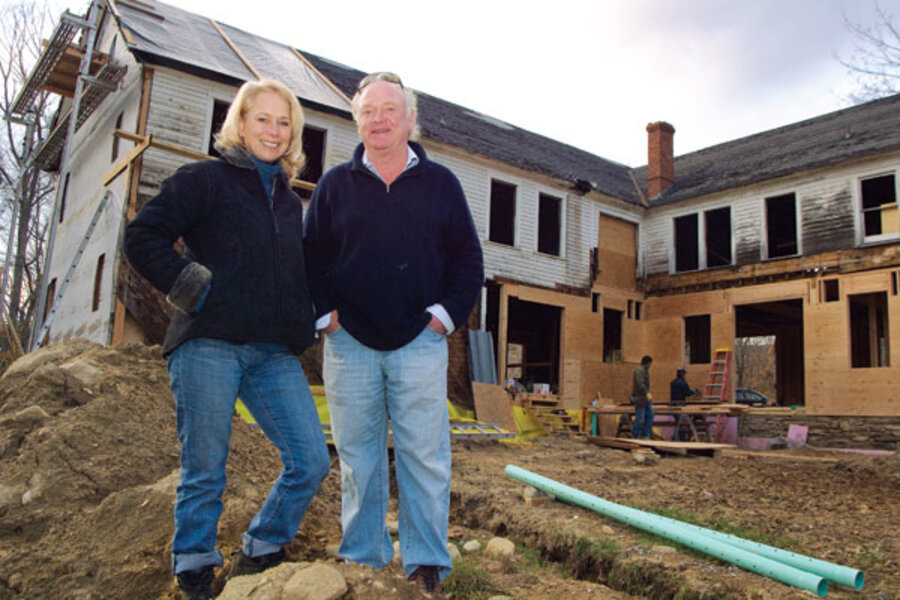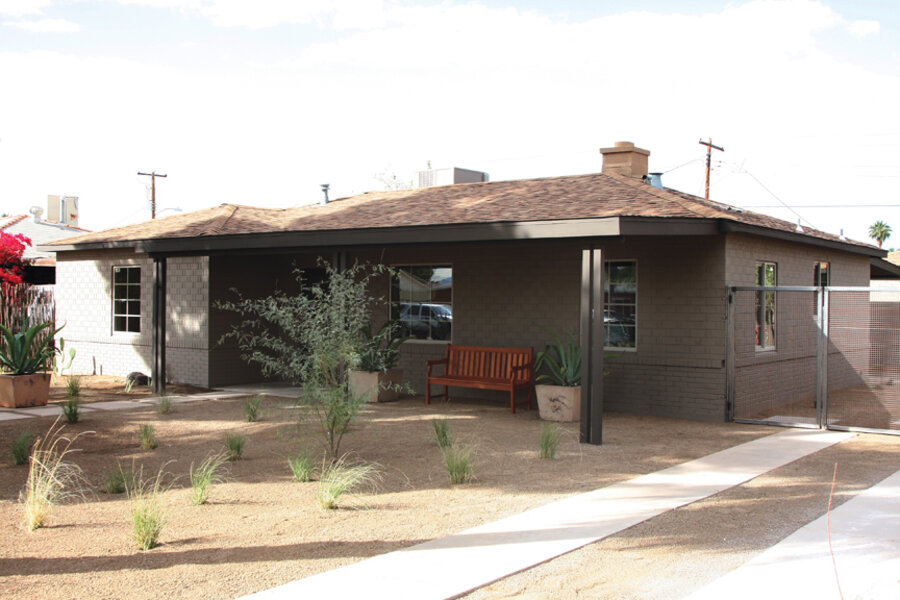Green building comes of age
| KILLINGWORTH, Conn.
Green building is finally coming of age. Building sustainable, energy-efficient homes became a fad during the 1970s energy crisis, bolstered by tax incentives for solar energy and growing environmental awareness. But its popularity faded as oil prices dropped, tax breaks were rolled back, and an economy of excess kicked in during the booming ’90s. Green became just a color to many in the culture.
But due to concerns about possible climate change, the recent spikes in oil prices, and a set of new tax incentives, green building has undergone a resurgence in the past two years.
“We’re no longer a ‘nascent’ industry. Things are moving rapidly now, starting to coalesce and solidify,” says Rick Schwolsky, the editor in chief of EcoHome magazine. “There’s still a lot of confusion, and no one standard and/or single organization that represents the beacon [of green building]. But trade associations are now fighting over who is greener. It’s the best thing that could happen.”
The National Association of Home Builders (NAHB), whose members are responsible for constructing 80 percent of the new homes in America each year, certified its first “Emerald Green” remodeled home in November.
It’s in Phoenix and is the first renovation in the country to meet the highest green standards developed by the NAHB. Called the National Green Building Standard, it was published in January and is the only green certification process accredited by the highly respected American National Standards Institute (ANSI).
In the past year, four new homes have also won “Emerald Green” certification, and dozens more are going through the process. But an even better indication of how fast green is moving mainstream is in the number of builders qualifying for the NAHB’s Certified Green Professional designation.
When NAHB started the program in February 2008, organizers had hoped to have 500 builders certified by the end of the year. But as 2009 rolled in, more than 1,500 builders had been certified. And today, more than 5,700 have gone through training and received the designation.
Many in the field credit the US Green Building Council, a nonprofit organization dedicated to educating people about the environmental and cost benefits of green building, with boosting the public’s awareness.
Back in 1998, it developed a set of standards called the Leadership in Energy and Environmental Design to certify commercial buildings as green. In 2005, it developed a LEED for Homes program.
“When LEED for Homes launched in 2005, we signed up 18 homes or so,” says Maureen Mahle, program manager of LEED for Homes at Steven Winter Associates, a design and construction firm in Norwalk, Conn. “This past year we signed up 1,800 units. That’s a 100-fold increase.”
Energy Star, the Environmental Protection Agency’s stamp of green approval, was instituted in 1995. Its requirements are not as stringent as those set by LEED or the NAHB, but it was the first national program to promote an efficiency standard. This month it’s celebrating the designation of 1 million homes as Energy Star-rated since 1995 – 1 in 7 new homes is rated energy efficient.
Two other factors are also helping to push green building mainstream. One is the growing perception that environmental and cost-effective methods are not mutually exclusive.
The second is technology. “Unlike the ’70s, the technologies are ready to introduce [green building] in fairly cost-effective and practical ways,” says Russell Campaigne, a LEED-certified architect in Guilford, Conn.
For many in the environmental field, this spurt of green activity is inspiring, but some also have a sense of loss over missed opportunities.
“I do my job with a sense of excitement and joy about the progress we’ve made today and the potential we still hold,” says EcoHome’s Mr. Schwolsky. “But there’s also a little bit of mourning the loss for the 35 years during which we could have come so much further.”
Editor’s note: The writer is renovating a 100-year-old farmhouse using environmentally friendly and cost-conscious methods. She blogs about her experiences twice a week in the Bright Green blog. For more articles about the environment, see the Monitor’s main environment page, which offers information on many environment topics. Also, check out our RSS feed.






